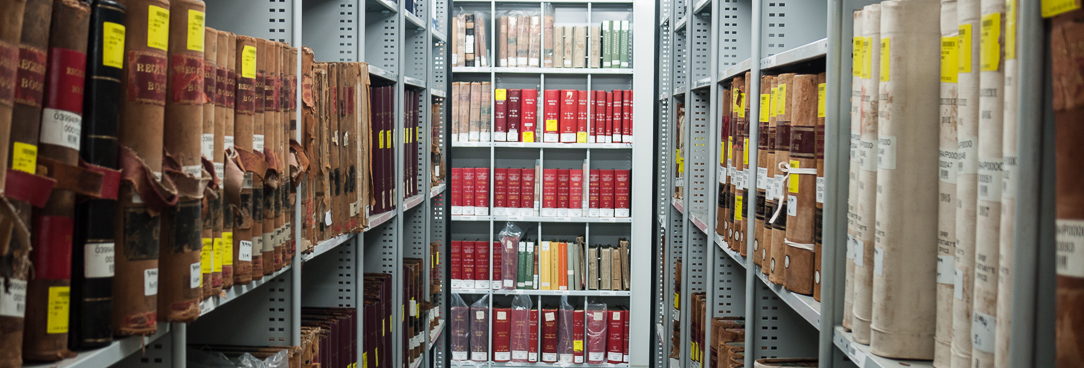Author: Charlie Farrugia
Senior Collections Advisor, Public Record Office Victoria
Most of us are by now aware of the new facilities that have been erected in London for the 2012 Olympic Games, especially the urban renewal site that is now a park housing the main stadium, swimming pool and other facilities. It appears the new facilities will join a number of similar and iconic specially designed and constructed Olympic venues that exist in cities such as Beijing, Munich, Montreal, Sydney, and infamously, Berlin. Many of the athlete’s villages remain, most notably in Barcelona where its clever location transformed the waterfront area.

-
Excerpt of Plan of Olympic Games Athlete's Village: VPRS 16284/P1, Unit 67
It could be suggested that Melbourne is another case entirely. Many of the sporting venues specifically built for the 1956 Games, a mere 56 years ago, no longer exist. The Northern (or Olympic) Stand, the sole major addition to the Melbourne Cricket Ground, made way for the grandstands constructed for the 2006 Commonwealth Games. Indeed, I suspect nothing remains of the M.C.G. structure as it existed during the 1956 Games apart from the clock on the Great Southern Stand. Most of the Olympic Park complex including the running track/football stadium and the velodrome has been demolished. The Olympic Pool remains but this ceased operating as a swimming venue long ago.
The remaining Games sporting venues have met with differing fates. Some, such as the Exhibition Buildings (wrestling, weightlifting and basketball) and St. Kilda Town Hall (fencing) reverted to their original function. Boxing events rarely feature at the West Melbourne Stadium, now known as Festival Hall. The Rifle Range in Williamstown (shooting) has become a housing development and another development has either swallowed or is encroaching upon the temporary clay shooting venue that was set up at Laverton. The Glaciarium, an ice rink that was to be converted for gymnastics and basketball before their relocation to other venues, was demolished for part of the Arts Centre precinct. Rowing events are today still held on Lake Wendouree in Ballarat despite construction of the National Water Sports Centre at Carrum, built apparently for the failed 1996 bid. Thus, aside from the Olympic Pool and the largely invisible rowing course, the only other major surviving piece of Olympic infrastructure is the athlete’s village in Heidelberg. This was taken over by the Housing Commission after the Games as originally planned.
-

-
Plan of the St. Kilda Town Hall as the Fencing Venue for the 1956 Olympic Games: VPRS 16284/P1, Unit 17

-
Start of the 2000m Rowing Course, Lake Wendouree, Ballarat: Excerpt from VPRS 16284/P1, Unit 7
If you want to see how all of these venues were originally set up for the games, you can access a series of plans at PROV originally maintained by the Games Organising Committee. The plans can now be found and ordered for viewing at the Victorian Archives Centre via our online catalogue as VPRS 16284 after a detailed listing was completed for the first time last year. Individual plans show the layout and floor plans for just about all of these venues, placement of the world’s press and broadcasters and finish line arrangements for road events and Lake Wendouree. Plans showing the location of games sites, including training venues, throughout Melbourne are also included as are two drawings showing the official list of Games gold medallists subsequently placed on the walls of the M.C.G. in line with the Olympic Charter.
But my favourite plans are those which show the layout of the athlete’s village. These contain annotations which identify the individual buildings in the site slated to hold competitors of which country. Of course this shows just the original intention as the Russian team was housed on an ocean liner moored at Port Melbourne for the games duration.

-
The Start/Finish Line and Complex on Pasco Vale Road for the Road Cycling Race, 1956 Olympic Games: Excerpt from VPRS 16284/P1, Unit 58

-
The Start/Finish Line At the Velodrome 1956 Olympic Games Showing also the Photo Finish Tower and Laboratory for Developing Prints: Excerpt from VPRS 16284/P1, Unit 41
If you are searching for other 1956 Olympics records don’t forget to dip into the subject filing system of the Organising Committee (VPRS 10743) and the digitised collection of photographs (VPRS 15162). The latter can also be easily accessed via the PROVwiki where you are invited to add additional, more meaningful, information to the official image descriptions or to share your own memories of the Games. We’d love to hear from you.
Material in the Public Record Office Victoria archival collection contains words and descriptions that reflect attitudes and government policies at different times which may be insensitive and upsetting
Aboriginal and Torres Strait Islander Peoples should be aware the collection and website may contain images, voices and names of deceased persons.
PROV provides advice to researchers wishing to access, publish or re-use records about Aboriginal Peoples
